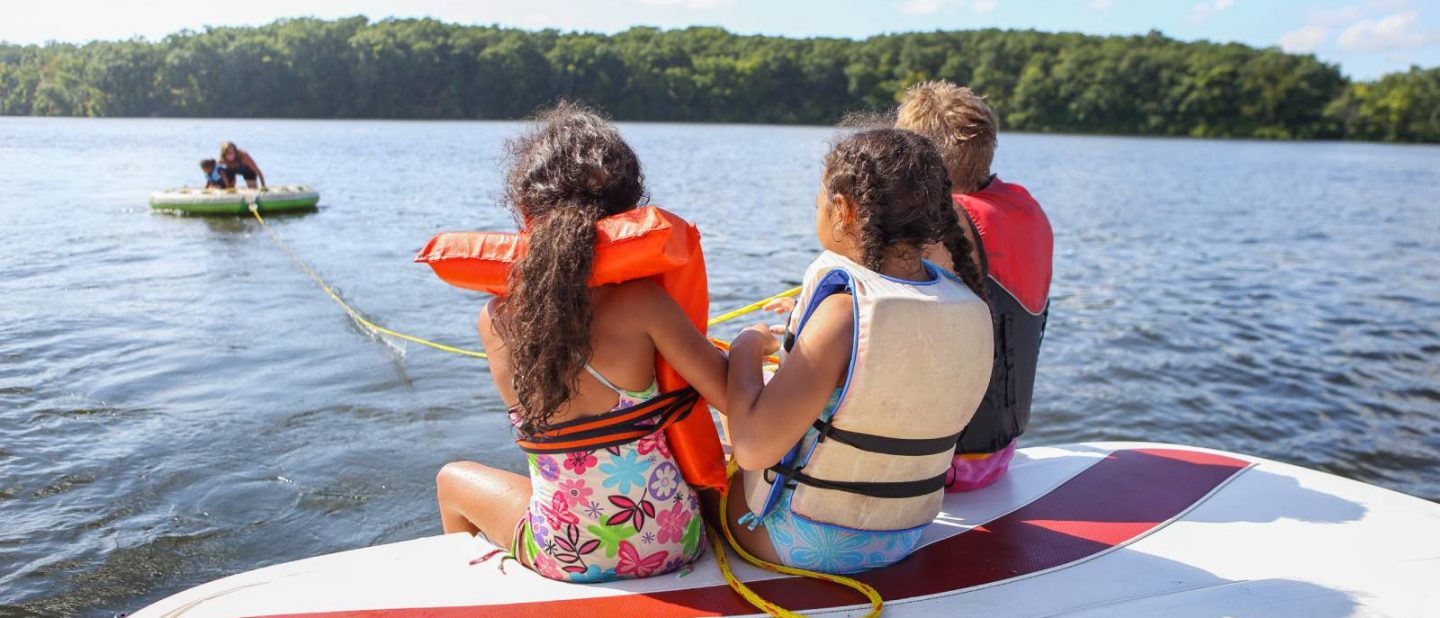
Summer risks and your child: making safety a priority
There’s nothing quite like an Australian summer. We all love the warm weather and the great outdoor life this season brings, but our children can be more vulnerable than their peers and there are things we need to be extra mindful of during this season of fun and sun. The heat, hydration (or lack of), risks around bodies of water, and sometimes simply the aforementioned great outdoors itself can throw up additional challenges. No matter how well we plan, accidents can, and do, happen but we can at least prepare ourselves for what summer has in store. We take a look at some of the issues and ways to make sure that this season is an extra safe one.
Water Safety
The holiday period presents unique challenges to water safety with a high percentage of drownings in Australia occurring during the summer months. Autism Swim have a fantastic 5 step water safety plan* to follow which includes:
1| Check your pool fences: Make sure yours completely isolates the pool from the house and yard, has self-closing and self-latching gates and is compliant to the Australian Building Standards.
2| Practice wearing life jackets: Wearing life jackets is essential to ensure safety in the case of an incident. Life-jackets can be uncomfortable and overwhelming for some children so consider creating a social story about wearing one, and practice wearing it at home and during swimming lessons using a slow, desensitisation approach.
3| Consistent attendance at high quality swimming lessons: Encourage your child to continue swimming lessons through primary school and choose an Autism Swim Approved service which addresses all aspects of the National Swimming and Water Safety Framework including movement and swimming strokes, survival and lifejacket skills and rescue skills. Parents must pay close attention during swimming lessons, to have a clear understanding of their child’s abilities and limitations.
4| Supervision and wandering prevention: Close, constant and attentive supervision of children in or around any water is a primary and absolutely essential preventative strategy. For beginner swimmers, adequate supervision is “touch supervision” in which the supervising adult is within arm’s reach of the child so he or she can pull the child out of the water if their head becomes submerged under water.
5/ Know the signs, rescues and CPR training: Drowning probably doesn’t look like what you’d expect it to. Signs to watch for include:
- Head low in the water, mouth at water level.
- Head tilted back with mouth open.
- Eyes closed or glassy and empty, unable to focus.
- Hair over forehead or eyes
- Not using legs – vertical.
- Hyperventilating or gasping.
- Trying to roll over onto their back.
- Appear to be climbing an invisible ladder or trying to swim in a particular direction but not making headway.
Immediate resuscitation at the submersion site, even before the arrival of emergency medical services is the most effective means to improve outcomes in the event of a drowning incident. Consider whether your CPR training is up to date.
Dehydration and heat exhaustion
It’s important to stay alert and mindful of how your child is faring in the heat, and how much they are drinking. Symptoms of dehydration include: thirst, not making tears, decreased urine output, decreased sweating, lethargy, muscle cramping, heart palpitations, nausea and vomiting.
Children with special needs are often at higher risk of dehydration because of their diagnosis, their medications or simply because they may be less able to read their body’s own signals. It is imperative that parents/carers are aware of how much fluid their child requires and whether their diagnosis means they are at high risk.
PREVENTION
Provide plenty of water to drink and check with your doctor to see how much extra water you should be putting down your child’s gastronomy tube if they have one.
- Keep indoors in the heat of the day or stay in the shade.
- Prevent sunburn.
- Wear a hat and light clothing.
- Provide light and water filled foods like watermelon, yoghurts and salads for snacks and meals and avoid sugar as much as possible.
- Consider adding coconut water or electrolytes if the day is particularly warm, your child is being active or they have had diarrhoea.
- If you know you have a big outdoorsy day ahead of you, plan to drink plenty in the days leading up to it.
- Remember that playing IN the water is not the same as DRINKING water – and schedule drink breaks.
CURE
- If you see signs of heat stress in your child take them indoors into air- conditioning or into the shade and cool them down.
- Offer them drinks with electrolytes.
- Use a shower, hose or cool compresses to cool their skin.
- Don’t use ice packs without a cover to protect their skin.
- Don’t use adult rehydration or sports drinks that could dehydrate them further.
See your doctor if symptoms don’t improve, or they worsen.
Call 000 if your child has two or more of the following symptoms as they may have heatstroke:
* Not sweating (at all)
* An extremely high body temperature
* A very fast and strong pulse
* Throbbing headache
* Dizziness and confusion
* Shallow, noisy breathing
* Loss of consciousness
Is your child a runner or prone to wandering?
For some families, simply being outside in crowded public spaces more during the summer can present challenges. Busy parks, beaches, play areas, walking tracks and more all present a risk if your child is a runner or prone to wandering. As you all well know, we are very rarely in ‘off- mode’ when we’re out with our kids but there are products and strategies you can look at to set your mind at ease in these circumstances.
The first goal is to develop an understanding of why the behaviour is happening.
Just of a few of the reasons your child may be running off:
- The environment is causing sensory overload. Children sometimes see running (and escaping) as their only option to relieve the sensory overload
- They become anxious around crowds.
- They had a picture in their head that something would happen in a certain way and that hasn’t happened.
- They simply did not want to go where you were taking them.
The list of possible reasons is endless. The key is to know that running away in public is not random. It is happening for a reason.
In the moment, what can you do?
When your child is already anxious, chasing will typically make them run faster and become less aware of where they are actually running. Instead, try to keep an eye on where they are and walk slowly towards them!
If they are in close proximity and catchable, then hold them firmly in your arms, sending them a message that you are there to support them.
Plan ahead. If your child runs off often, have a safe place for your child to run to where they can relieve any sensory overload and is a safe place if they’re feeling overwhelmed. If you can nominate a safe spot, let them know there is somewhere they can go to where they will be found and won’t be in trouble.
Also, put strategies in place for yourself to remain calm (gentle breathing), knowing that as your own anxiety levels increase you are actually adding to the situation by either providing the reaction your child was after, or adding to your child’s anxiety and thus increasing the intensity of the behaviour.
If your child is a wanderer there are some great wearable tracking devices available such as the Moochies Smartwatch or even an Apple Watch if your child is old enough for one. Name tags, ID bracelets and even labelled clothing can also help ease your mind.
If your child should become lost, it also helps if you have a recent photo available – perhaps snap one of them in their swim gear on the day, if you’re headed to the beach, and also a written description of your child’s special needs – will they respond to their name, can they reply to questions, will they run away etc.
We hope that all of the above can help you to have a fun, relaxed summer enjoying our beautiful great outdoors.







